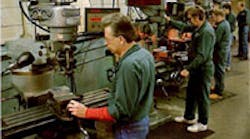Investment casting has gained rapid acceptance because of the substantial savings it can provide over alternative manufacturing methods. Near-net-shape investment castings save material, eliminate secondary machining operations and have better surface finishes compared with sand castings. According to Thompson Investment Casting (www.thompsoninvestmentcasting.com), investment castings also make part configurations possible that are often impossible to produce with other processes, giving engineers the freedom to design truly intricate parts as one-piece castings.
The company uses the latest technology, along with years of investment casting experience, to pour steel alloys, copper and copper-based alloys into extremely complex shapes with fine details, smooth surfaces and cross sections as thin as 0.020 in.















